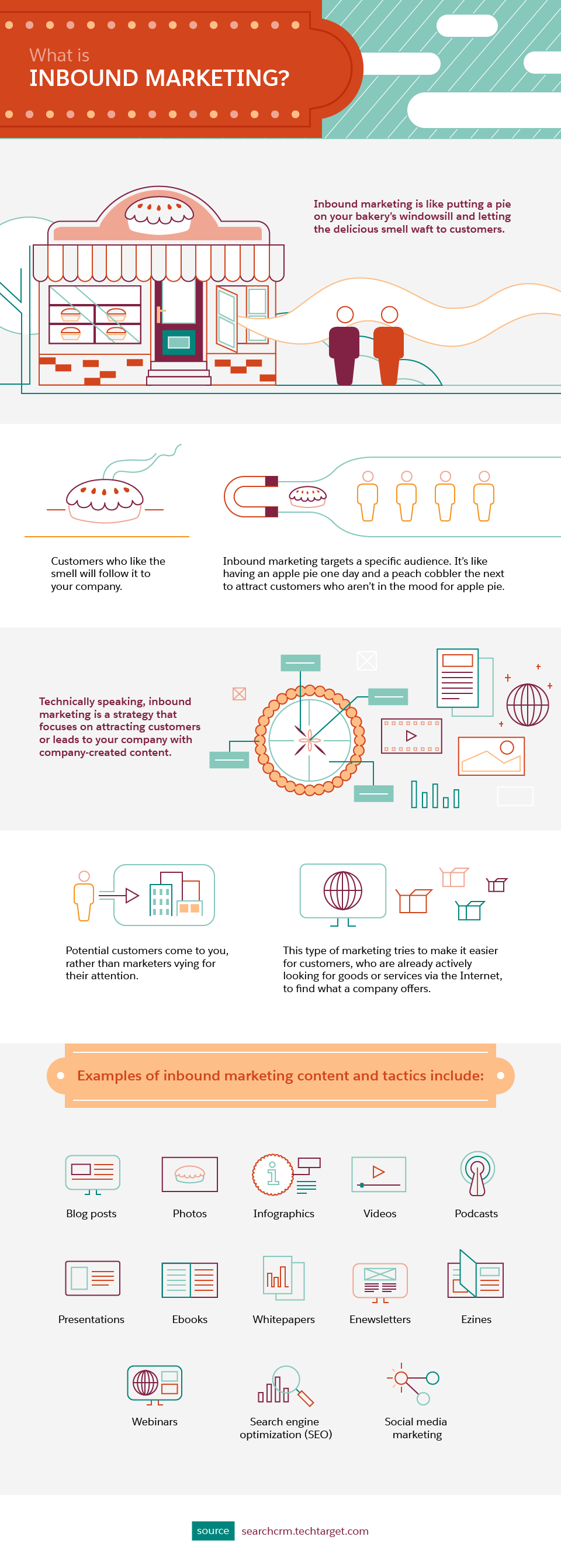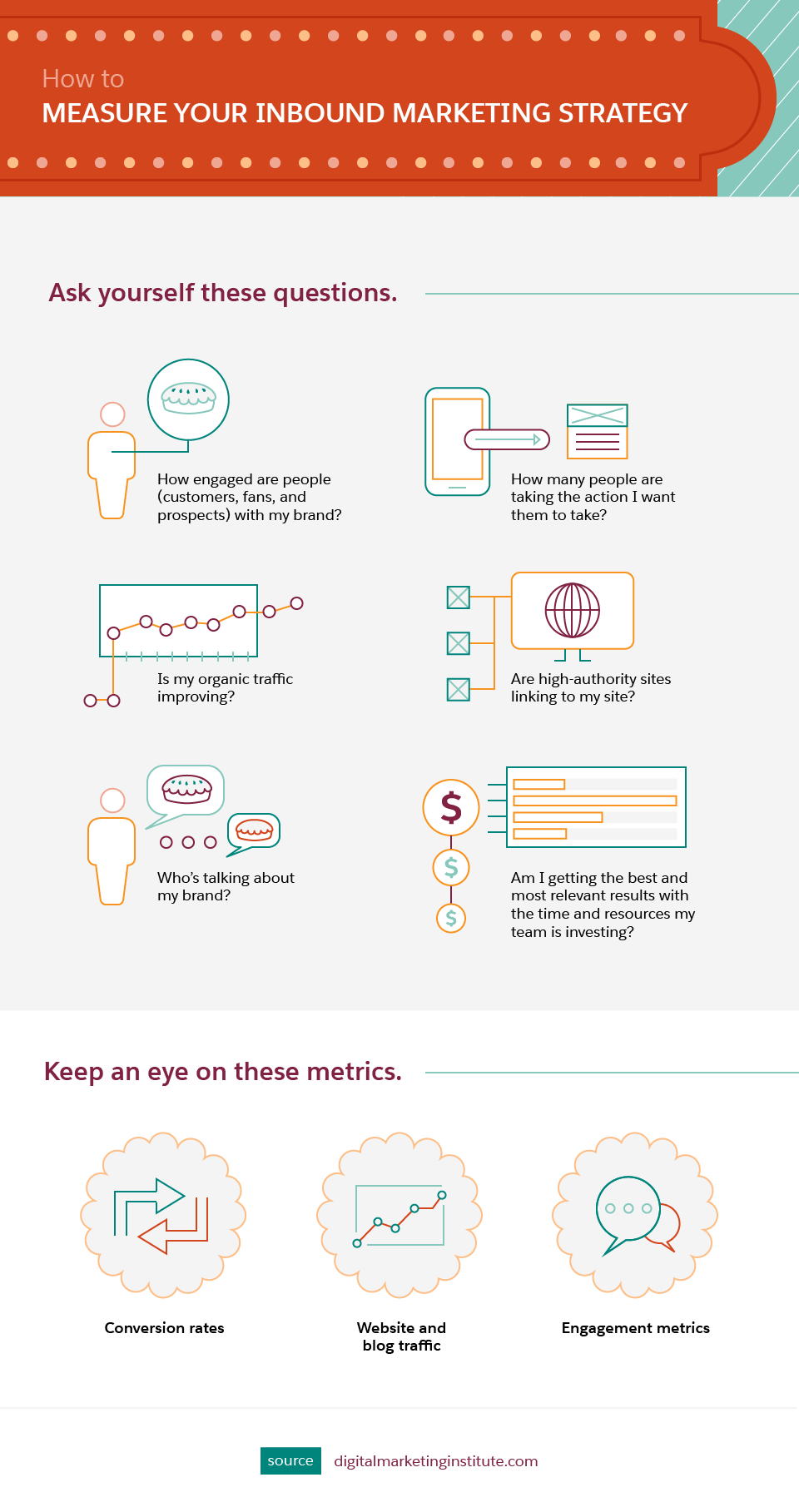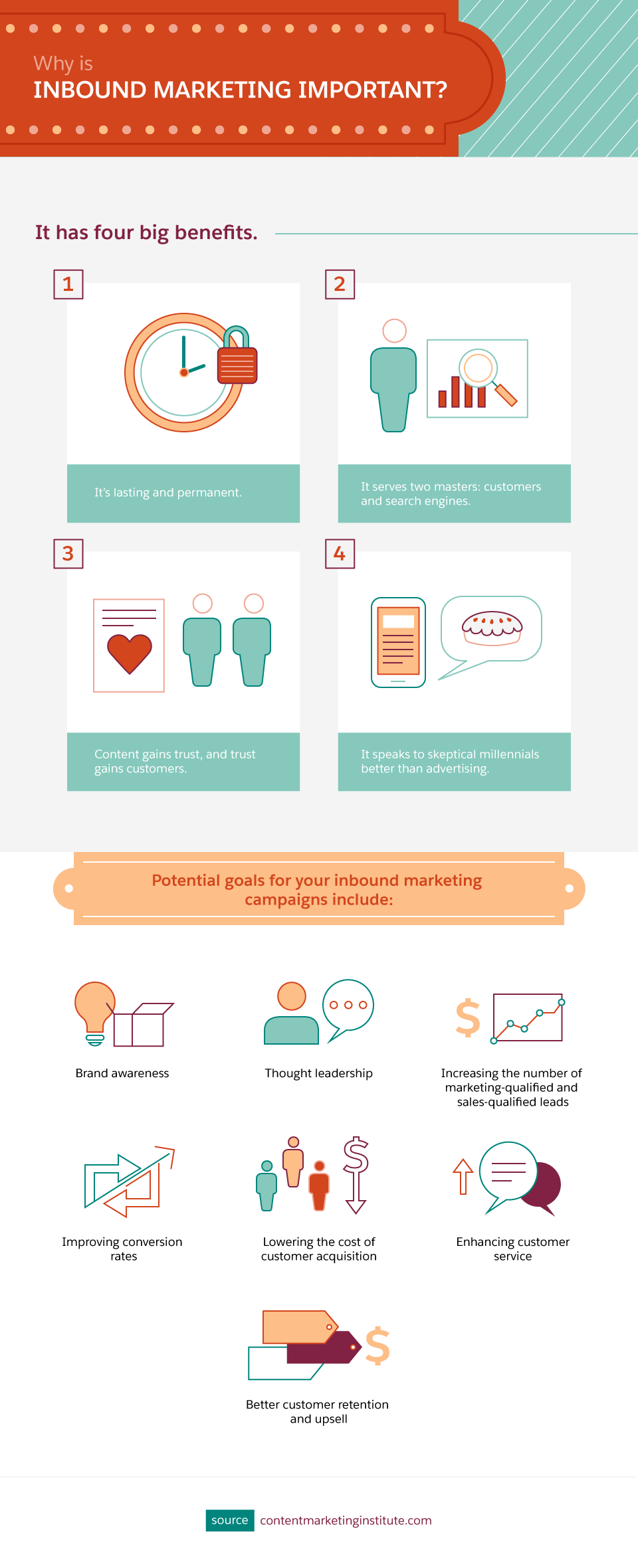Your Biggest Questions About Inbound Marketing, Answered



When inbound marketing is done right, it’s a great way to attain something that most of your outbound marketing dollars will never buy: a loyal, informed customer.

Jessica Bennett
“How do I get customers interested and excited about my products and services?” It’s a simple question, but the answer may seem as complex as a graduate level class in astrophysics, especially in today’s world of fractured attention spans and hyper competition. In this terrain, traditional marketing techniques are losing their potency. Customers pay extra to skip commercials and toss spam mail in the recycling bin, unopened. They filter their email inboxes and screen calls. In other words, we’ve all become experts at ducking, dodging, and ignoring outbound marketing.
Today, savvy marketers embrace a marketing strategy called inbound marketing and its accompanying philosophy of creating useful and meaningful experiences for their customers. Again and again, marketers have discovered that inbound marketing techniques not only help them increase their bottom-line sales, but also build a growing army of fiercely loyal customers.
Here’s what you need to know to start strategizing and implementing inbound marketing in your company.
What is Inbound Marketing?
At its simplest, inbound marketing is a method that entices potential customers to come to you. It’s like baking a delicious pie and putting it on your bakery’s windowsill so that the scent wafts through the neighborhood and brings everyone to your door.
In the world of inbound marketing, that “pie” is something — a piece of content — created specifically to help, entertain, engage, or educate your ideal customers.
Of course, not everyone likes the same kind of pie. Another key aspect of inbound marketing is identifying your dream customer and whipping up something that will appeal uniquely to them. That means understanding their pain points, their hopes, their wishes, and the type of messaging that speaks their language.
Patagonia does this brilliantly on its Pinterest page. Sure, they have plenty of boards dedicated solely to their products, but they also have boards like “Snow,” “Bears Ears,” “Environmental Activism,” and “Worn Wear.” These boards express the values, places, and things that are near and dear to the hearts of their outdoorsy customers.
What is Inbound Marketing?
- Inbound marketing is like putting a pie on your bakery’s windowsill and letting the delicious smell waft to customers.
- Customers who like the smell will follow it to your company.
- Inbound marketing targets a specific audience. It’s like having an apple pie one day, and a peach cobbler the next to attract customers who aren’t in the mood for apple pie.
- Technically speaking, inbound marketing is a strategy that focuses on attracting customers or leads to your company with company-created content.
- Potential customers come to you, rather than marketers vying for their attention.
- This type of marketing tries to make it easier for customers, who are already actively looking for goods or services via the Internet, to find what a company offers.
- Examples of inbound marketing content and tactics include:
- Blog posts
- Photos
- Infographics
- Videos
- Podcasts
- Presentations
- Ebooks
- Whitepapers
- Newsletters
- Ezines
- Webinars
- Search engine optimization (SEO)
- Social media marketing

What are Examples of Inbound Marketing?
Think again about the example of the pie that brings hungry customers to your door. What exactly is that pie that will bring excited customers to your website or store?
This is where inbound marketing gets exciting. Your company’s pie can be almost anything that would be of interest to your customers. Think of your pie as a treat to engage customers that also aligns with your company’s mission, brand, service, and products. The connection doesn’t have to be direct, but it shouldn’t be so abstract that customers don’t link it to your business.
Here are some great inbound marketing goodies that you can prepare in your marketing kitchen:
- Whitepapers
- Blog posts
- Infographics
- Social media posts
- Podcasts
- Webinars
- Videos/a YouTube Channel
- SlideShare presentations
- eBooks
Seth Godin is a famous business executive with a cadre of fans among the MBA crowd. He’s written plenty of books that he wants to sell, but he also passes on his wisdom and burnishes his brand through a blog where he dispenses nuggets of wisdom every day.
This blog is one of his pies. It helps him maintain his status as a thought leader in business and marketing while turning casual readers into fans who are happy to pay $12.99 for his latest book.
Maybe you don’t have the time or the patience to write a blog post every day. That’s fine. There are plenty of different ways to develop an inbound marketing campaign.
How to Measure Your Inbound Marketing Strategy
- Ask yourself these questions:
- How engaged are people (customers, fans, and prospects) with my brand?
- How many people are taking the action I want them to take?
- Is my organic traffic improving?
- Are high authority sites linking to my site?
- Who’s talking about my brand?
- Am I getting the best and most relevant results with the time and resources my team is investing?
- Keep an eye on these metrics:
- Conversion rates
- Website and blog traffic
- Engagement metrics

How does Inbound Marketing Compare to Outbound Marketing?
One of the best ways to understand inbound marketing is to focus on what it is not. The opposite of inbound marketing is outbound marketing, and the names say it all. The entire ethos of inbound marketing is to create something that will draw customers to you and make them excited to interact with your company.
Outbound marketing focuses on pushing an advertising message outward and trying to snag the limited attention of potential customers. Common forms of outbound marketing include:
- Generic email blasts with a purchased list
- Billboards
- Television and radio commercials
- Direct mail
- Flyers handed out on the street or put under windshield wipers
- Google and Facebook ads
- Pop up banners
- The sign spinner on the corner busting some serious moves
The challenge of outbound marketing is that it may annoy people. Most of us don’t look forward to receiving junk mail or checking our email spam folder. We may appreciate the dancing sign spinner’s moves, but we probably won’t remember the business or message plastered on the sign.
The beauty of inbound marketing is that it is specifically designed to be useful. It is something that customers generally want to engage with. Unsurprisingly, this means that inbound marketing often requires more time, effort, and patience. It may also require guiding your prospects through a longer buyer’s journey.
Is there a place for outbound marketing in today’s hyper-speed world? Yes. Outbound marketing offers its own benefits, including simplicity and, sometimes, faster conversions. Ideally, inbound and outbound marketing are used together. Depending upon your unique customer journey and customer experience, you need a combination of inbound and outbound marketing to guide leads to purchase — and keep current customers happy.
How Do You Create an Inbound Marketing Strategy?
If you’re ready to start rolling out pie dough, you’ve gotten a little ahead of yourself. Before you can start making your inbound marketing pie, you need to figure out who’s in your audience. It also doesn’t hurt to ensure that you have the time and ingredients to make the best pie possible.
A successful inbound marketing campaign starts with a comprehensive inbound marketing strategy. Step one is to identify your target audience. Patagonia, for example, focuses on people who love the outdoors and have the disposable income to invest in high-quality gear. For certain inbound marketing campaigns, they may zero in on an even more specialized audience: Their “Worn Wear” campaign, for example, encourages people to repair damaged outdoor gear instead of throwing it away. A message like that likely appeals to today’s growing group of millennials who care deeply about throwing less stuff into landfills.
Why is Inbound Marketing Important?
- It has four big benefits:
- It’s lasting and permanent.
- It serves two masters: customers and search engines.
- Content gains trust, and trust gains customers.
- It speaks to skeptical millennials better than advertisng.
- Potential goals for your inbound marketing campaigns include:
- Brand awareness
- Thought leadership
- Increasing the number of marketing-qualified and sales-qualified leads
- Improving conversion rates
- Lowering the cost of customer acquisition
- Enhancing customer service
- Better customer retention and up-sell

Seth Godin’s audience, on the other hand, is completely different. He gears his blog toward midlevel and executive level business leaders and marketers. Anyone who has their eye on the corner office is someone who can benefit from his blog.
Who is your audience? If you don’t know, ask your sales and customer service teams. They know more about what your ideal customers care about, the major problems they face, and how your products or services affect (and improve) their lives.
Once you know your audience, brainstorm what content will really speak to that buyer persona. Any company can develop an exciting inbound marketing campaign. Are you a bank that wants to turn young college grads into lifelong customers? One idea might be creating a graphic novel about how to buy your first car.
As you brainstorm ideas, make sure you have the time and resources to properly make your pie. Writing a blog or starting a YouTube channel is a big endeavor, and it may take months (or even years) to grow your audience and get the word out. You’ll also need to put in effort to market your pies. Yes — that means marketing your marketing. If you don’t, no one will know your blog, graphic novel, or podcast exists.
Next, make sure your campaign serves a higher purpose. Seth Godin’s blog builds incredible loyalty among his readers, many of whom will buy any book he writes. Patagonia’s entrancing Pinterest boards remind their followers how much they love travelling and camping. Soon, they’ll be planning their next trip and picking up new gear from their favorite provider: Patagonia.
As you create your pie, figure out how it fits in with the rest of your marketing. This is the time to hook together your inbound and outbound marketing efforts. For example, perhaps you’ll ask your audience to fill out a form in order to download your free graphic novel. You can then create an automated email campaign to tell those prospects about your bank’s low interest rates on car loans, or credit cards designed for new college grads who need to build credit.
Finally, make sure you can track the success of your inbound marketing campaign and related efforts. Not every pie will come out perfectly. If no one is reading your blog after a year of weekly posts, it may be time to try something different. Analytics, trackable links, email signups, and more can all be used to determine how much attention and love your inbound marketing pie is garnering.
What are Some Inbound Marketing Examples?
Patagonia’s Pinterest page and Seth Godin’s blog are just two examples of great inbound marketing. Once you start looking, you’ll find plenty of others. For example, American Express does a brilliant job of providing an incredible array of useful content for business owners with its OPEN Forum. Likewise, check out the Starbucks Facebook page when you get a chance, and you’ll see pictures, stories, and useful features such as job postings, store locators, and fun contests. Even Lyft is getting into the inbound marketing game with its new podcast “Pick Me Up,” which features stories about its drivers. Those who listen may just tap their Lyft app instead of another option next time they need a ride.
Start looking for inbound marketing campaigns to get some fresh ideas for your own marketing. Check the social media pages, websites, and forums of your favorite companies and brands and see what inbound marketing campaigns they’ve been baking up.
Time to Get in the Kitchen
Inbound marketing is time intensive. It requires you to develop a deep understanding of your customer, and you may spend weeks or months creating something that doesn’t directly sell your products or talk up your services. Welcome to the world of inbound marketing. When done right, it’s a great way to attain something that most of your outbound marketing dollars will never buy: a loyal, informed customer.
Share “Your Biggest Questions About Inbound Marketing, Answered” On Your Site






















